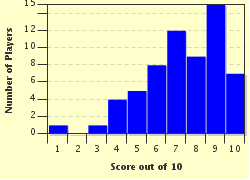Quiz Answer Key and Fun Facts
1. Portugal not only had the first global empire in history, the empire was also the longest lasting of the modern European colonial empires.
2. The Portuguese empire began in 1415 when the Portuguese made an attack on which North African Muslim enclave in Morocco?
3. After taking Muslim territory in Africa, Prince Henry the Navigator became interested in the possibility of reaching Asia by sea. Soon Portugal took control of the island of Madeira and which other island group in the Atlantic Ocean?
4. As Portuguese explorers progressed down the western coast of Africa, forts and trading posts were built. Portugal enjoyed a monopoly of the trade of which of the following for nearly one hundred years?
5. With which country did the Portuguese sign the Treaty of Tordesillas in 1494? For the time being, it settled disputes over land by the two rivals.
6. After the Treaty of Tordesillas which land in the New World was claimed by Pedro Cabral for Portugal?
7. Soon after Portuguese conquistadors reached India, a trading center at Tangasseri, Quilon, was established. This city became the center of trade for which commodity? Desire for this spice really sparked the Age of Exploration.
8. Which area in India was conquered by Afonso de Albuquerque in 1510? It was here that the first Portuguese mint in Asia was established.
9. What did the Portuguese call the peninsula that they hoped would become their base of trade in China and South-east Asia? Today it is called the Malay Peninsula.
10. Jorge Álvares, a Portuguese conquistador, was the first European to reach China in 1513.
Source: Author
ponycargirl
This quiz was reviewed by FunTrivia editor
bloomsby before going online.
Any errors found in FunTrivia content are routinely corrected through our feedback system.

